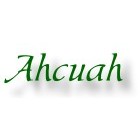It’s now been 12 weeks from the surgery to repair my ruptured Achilles tendon. Boy do these things take a long time to heal (and often they never do get back to normal).
Looking through the published literature, it’s easy to get depressed. People just don’t recover fully from an Achilles tendon rupture. For instance, here’s part of the abstract from Major functional deficits persists 2 years after acute Achilles tendon rupture by Olsson et al.:
This long-term follow-up indicates that the majority of patients with an Achilles tendon rupture have not fully recovered (in regards to symptoms, physical activity level and function) 2 years after injury. Furthermore, only minor improvements occur between the 1- and 2-year evaluations.
The patients appear to have adjusted to their impairments since the patient-reported outcome is relatively high in spite of functional deficits and lower activity level compared with pre-injury.
[Ellipses omitted.]
There are all sorts of other statistics:
Only about 54% of those injured returned to sports. 30% had the ability but were afraid to (more or less).
Calf strength is usually reduced 10-30%.
Rising on the toes for extended times is reduced by 20-30%
For pro athletes, 32% of football players and 39% of basketball players never returned at a professional level. And those that did return just weren’t able to perform as they did before.
However, some patients really do recover 100%.
Cheery, ain’t it?
But that said, I had a nice 2-mile hike yesterday, twice the length of any previous hike since surgery.
You can see how long it takes in this chart to progress.
So, despite all the gloom and doom, I think I am progressing fairly well compared to that timetable.
My surgeon is still “slow-walking” me. All of the “protocols” he is familiar with have the patients walking around in shoes with heels. Which, as you may have noticed, I don’t do.
I tend to suspect that he is being overly conservative. After all, the “protocols” are mainly based on what others have tried that worked. However, they really didn’t test the limits of the protocols. (That is, they didn’t say, “Well, that worked at 6 weeks with heels. Now, let’s cut that to 4 weeks, remove the heels, and see if we can get it to re-rupture. They wouldn’t want to put their patients through that.) So, as I said, my surgeon wanted to be cautious. As he said to me yesterday, “I’ve never done a barefooter before.”
Yes, he actually used the word “barefooter”. I’m guessing he may have done a bit of internet research himself. 🙂
I figure that for myself, I need to trust the feedback that I get from my bare soles (and the rest of me). I could tell when I was reaching the limit of what I’d already done in physical therapy, and I hiked accordingly. Yes, it leads to a funny gait, but that’s what all Achilles patients have at this stage. I just may be more sensitive to that.
Here’s the trail I was on at Pickerington Ponds Metro Park, approaching the bridge over George’s Creek.
Yes, I was hiking on gravel. That was on purpose, trying to build up my soles again, after a long layoff.
And here I am, on that bridge.
It is really odd what has happened to my soles, in particular a difference between might right (uninjured) and left (injured) sides. The right side is still in good shape, with the sole having a typical barefooter’s hardness (while remaining flexible). It still passes The Tap Test.
The left side, on the other foot, is mushy. It never peeled, as I had feared, so that’s a plus. And as far as I can tell, it is still just as thick as the sole on my right foot.
But it is mushy. It’s as if all of the hardened keratin of my callous leaked away.
That also leads to a slight annoyance: small pebbles tend to stick in the mushiness and I have to keep brushing them out. My regular foot, with the hardened sole, doesn’t have that problem at all.
After a mile out, I was at a nice observation point overlooking one of the ponds.
On the way back, I kept expecting to get tired, but it never really happened. I occasionally felt a bit “stretched”, but never particularly fatigued.
I also came across some of my footprints from going the other way. One thing I really noticed is that my left side had a real footprint again.
[Picture heavily processed trying to bring out the footprint.]
You can see the whole print. On earlier hikes, the ball of my foot didn’t show up at all (or at least much) because I could not put my full weight on the front of my foot. But you can see that it’s pretty good here. There were even some footprints in which my toes showed up.
So, that’s were I am right now. I’m coming along; I’m encouraged. But it’s a lot of work and a lot of effort.
It’s also just pushing through (while worrying about overdoing it).






“However, some patients really do recover 100%” – well, I’ll keep my fingers crossed for that to be your case 🙂 And thank you for the detailed “progress reports” with pictures – if I didn’t know you were injured and only three months into rehabilitation process, I’d have never guessed. Oh, I know pictures are static, but still – you look good and fit, and I bet you will surprise your surgeon more than once during your recovery. All the best to you, Bob 🙂
I’m glad you’re doing so well, and I’m pretty sure you’re going to get to your 100% sooner than later.